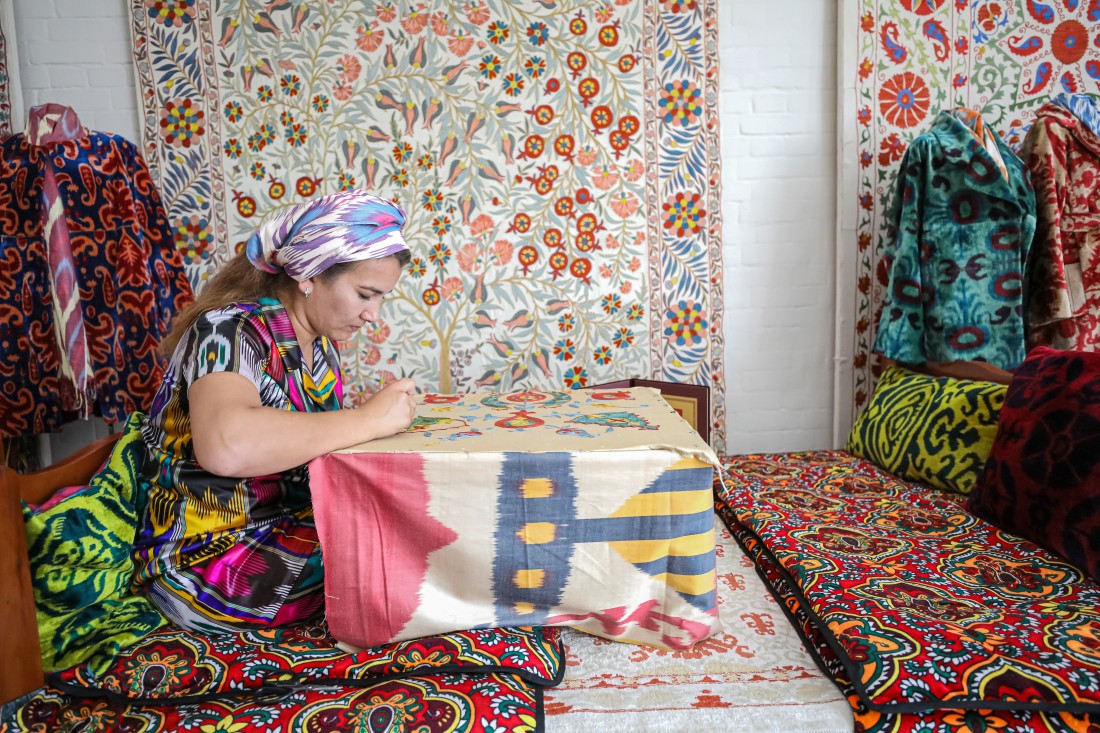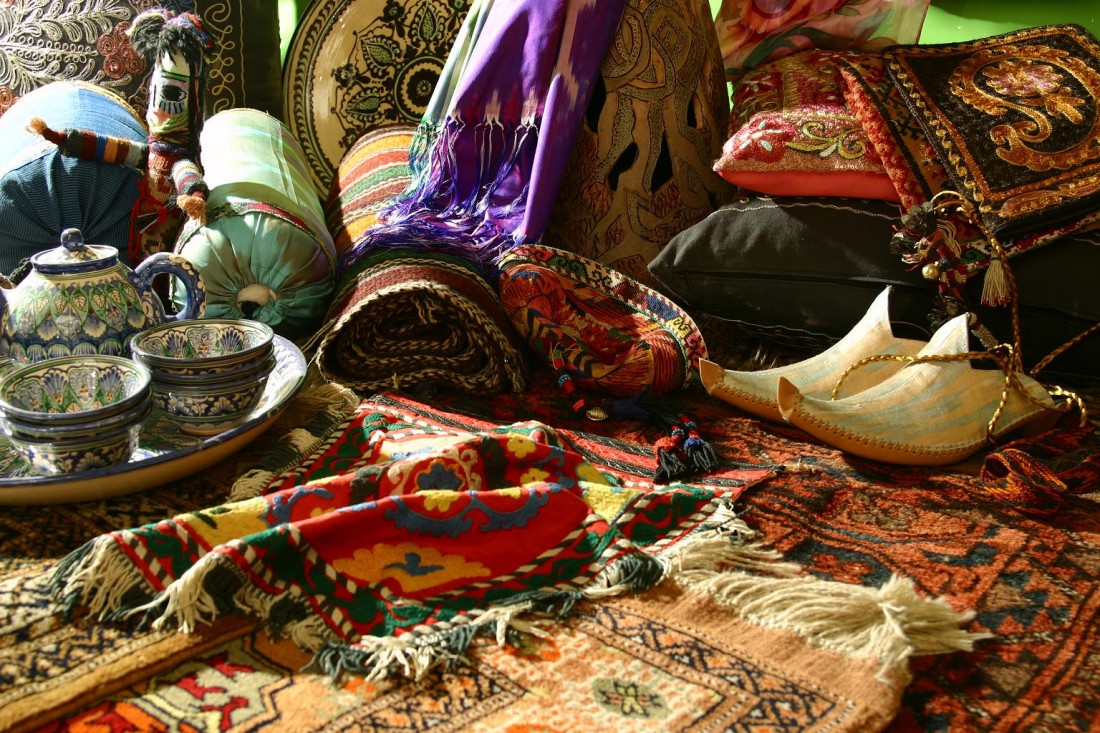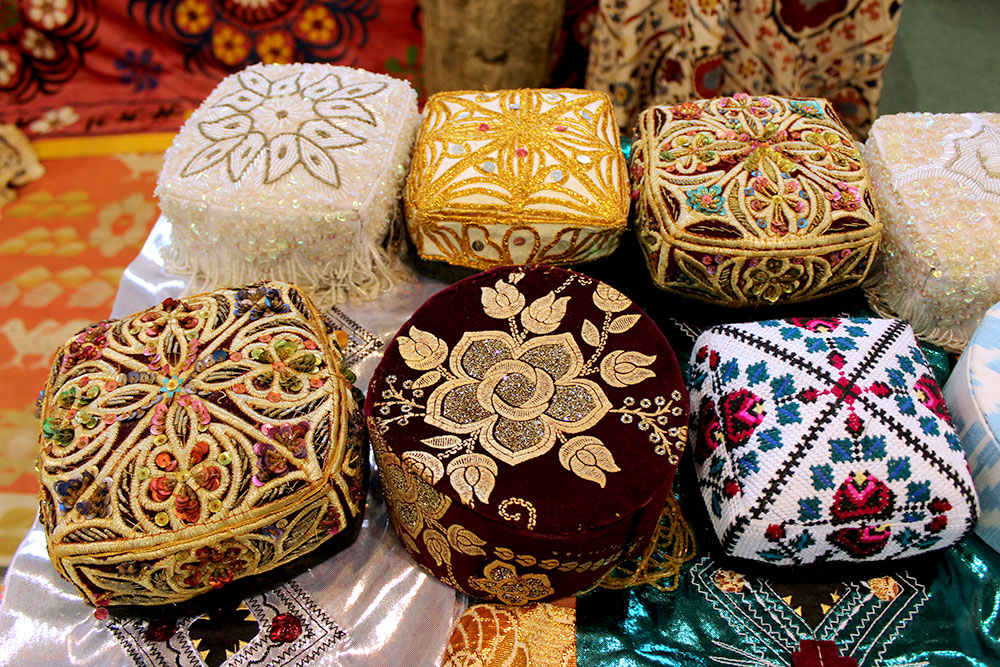One of the most common types of Uzbek arts and crafts is artistic embroidery - kashtachilik. Unimaginable patterns, stitch by stitch, are made by the dexterous hands of a kashtachi master, creating an elegant piece of national craft.
Since ancient times, craftswomen have won hearts with artistic embroidery. The history of the appearance of such art goes back to the deep past and is closely intertwined with the culture of the Uzbek people. The work of kashtachi craftswomen reflects the way of life, traditions and customs, love for all living things, and all this is created by combining creative imagination with technical skills.

The main schools of artistic embroidery on the territory of Uzbekistan were formed at the end of the 18th - beginning of the 19th century in six cities: in Nurata, Samarkand, Shakhrisabz, Tashkent, Fergana and Bukhara. Art reached its peak of development at the beginning of the 20th century, but to this day the craft remains part of the culture.
Kashtachilik embroidery is quite diverse. Skullcaps “duppi” or “kalpok” are covered with graceful patterns, women’s dresses “kuylak” and men’s “chapans” are decorated, the Uzbek house is decorated with embroidered suzani, “palak” (large panels) or “parda” (curtain), kurpachi blankets are decorated , carved tables "khon-ottoman" and chests, as well as "gavor" cradles for newborns are aesthetically decorated.

Every embroiderer has her secrets and signs. For example, when finishing embroidering, there must certainly be one curl left unfinished. Based on the sign, so that the craftswoman could create many more products and she had a long happy life.
Bukhara craftswomen prefer to use seams called "bosma", "dol", "iroki" in their products. As a rule, such fabrics have loose weaves of seams. Special attention in ancient times was given to bathrobes. The free cut did not hamper the mistress in movement, it was perfectly worn in the hot summer, providing comfort and coolness. In particular, residents of Samarkand and Bukhara preferred to wear light “rumcha” robes attached to the waist.
Special attention deserves the preparation for the embroidery process. Perhaps this is a whole art, complex, requiring the study of all types of seams and techniques. Before applying embroidery, the artists think over the concept of the pattern.
It is known that each drawing and the chosen color have their sacred meaning. For example, almonds are symbols of longevity and eternity, pomegranate is a symbol of well-being and wealth. And to protect themselves from envy and the evil eye, they apply a stylized hot pepper.

The ornament of each figure is created with silk threads, it is not repeated and combined with neighboring patterns - this is how a pattern of unimaginable beauty is formed. Ornaments demonstrate a rich imagination, a creative flight of fancy, the skill and talent of an embroiderer.
Traveling through the "golden cities" of the Silk Road in Uzbekistan, you can touch the rich culture, not only enjoying the magnificent architecture, but also the true masterpieces of folk arts and crafts.









Working hours: 9:00 AM - 6:00 PM, Mon-Fri
For any questions
ПОЛЬЗОВАТЕЛЬСКОЕ СОГЛАШЕНИЕ
1. Определение
Настоящее Пользовательское соглашение (далее — Соглашение) является Публичной офертой в соответствии со статьёй 367 Гражданского кодекса Республики Узбекистан от 21.12.1995 (https://lex.uz/ru/docs/111181#162763) и регулирует порядок использования материалов и Сервисов сайта Государственного унитарного предприятия «Национальный PR-центр» (далее — Предприятие), размещённого на веб-сайте и поддоменах Национального Туристического Информационного Центра: https://uzbekistan.travel/ (далее — Сайт).
Посетитель и (или) Пользователь подтверждает, что ознакомлен, полностью и безоговорочно принимает все условия настоящего Соглашения и обязуется их соблюдать.
Использование Сайта Пользователем означает полное принятие данного Соглашения «как есть» в форме акцепта.
Соглашение вступает в силу с момента посещения любой страницы Сайта и (или) регистрации на Сайте и действует бессрочно во время пользования Сервисами Сайта.
Настоящее Соглашение обязательно для исполнения всеми Посетителями и Пользователями без каких-либо изъятий и дополнительных согласований.
Пользователь обязуется самостоятельно проверять актуальную редакцию Соглашения на Сайте перед использованием Сервисов.
2. Предмет Соглашения
Предметом настоящего Соглашения являются правила использования материалов Сайта и предоставление Посетителю и (или) Пользователю возможности использования Сервисов Сайта.
Предприятие является правообладателем исключительных прав на Сайт в целом и на его составные части, включая все виды контента: логотипы, товарные знаки, тексты, статьи, аннотации, иллюстрации, фотографии, графику, аудио- и видеофайлы, пользовательские интерфейсы, дизайн, структуру, программы, базы данных.
Я прочитал(а) и соглашаюсь с условиями использования сайта и политикой конфиденциальности.
